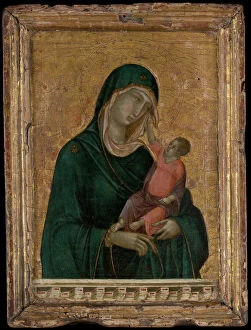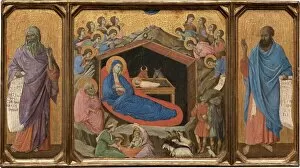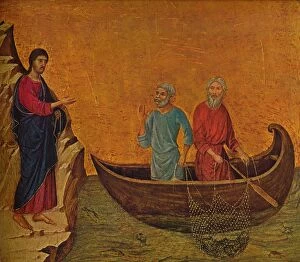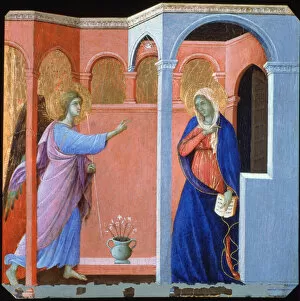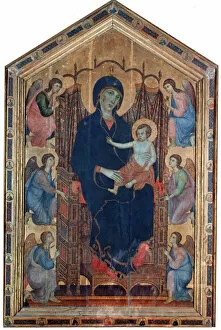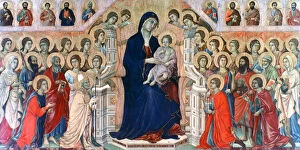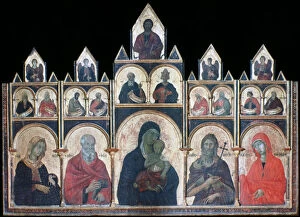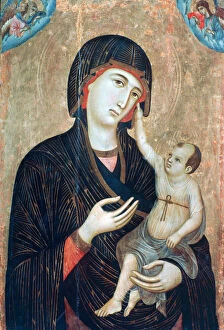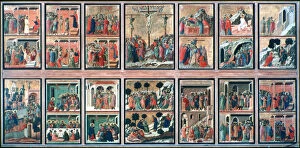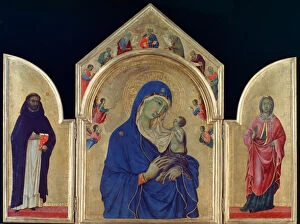Duccio Di Collection
Duccio di Buoninsegna, a renowned Italian artist from the 13th and 14th centuries, left an indelible mark on the world of art with his exquisite creations
For sale as Licensed Images
Choose your image, Select your licence and Download the media
Duccio di Buoninsegna, a renowned Italian artist from the 13th and 14th centuries, left an indelible mark on the world of art with his exquisite creations. One of his notable works is the "Madonna and Child" painting, believed to have been created around 1290-1300. This masterpiece showcases Duccio's exceptional talent in capturing the tender bond between mother and child. In another remarkable piece titled "The Nativity with the Prophets Isaiah and Ezekiel, " completed between 1308-1311, Duccio skillfully depicts the birth of Jesus Christ surrounded by two revered prophets. The intricate details and vibrant colors bring this sacred scene to life, showcasing Duccio's mastery in religious iconography. "The Calling of the Apostles Peter and Andrew, " also painted during this period, portrays a pivotal moment in biblical history. Duccio's brushstrokes beautifully convey both awe and humility as these apostles respond to their divine calling. Among his most celebrated works is a panel from the Maesta Altarpiece called "The Annunciation. " Created in 1311, it captures Mary's encounter with Gabriel as he delivers news of her impending motherhood. Through delicate lines and soft hues, Duccio evokes a sense of serenity that permeates this holy event. Another significant creation by Duccio is the "Rucellai Madonna" from 1285. This enchanting portrayal exemplifies his early style while demonstrating his ability to infuse emotion into religious subjects. "The Transfiguration, " completed in 1311, showcases yet another facet of Duccio's artistic brilliance. This captivating piece depicts Jesus' radiant transformation before three disciples atop Mount Tabor—a testament to both faith and divinity. One cannot overlook "Maesta, " which encompasses several panels depicting various scenes from Christ's Passion—created between 1308-1311.

